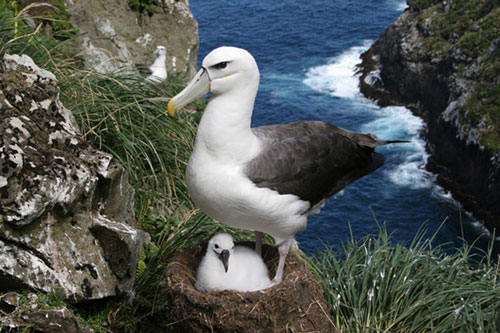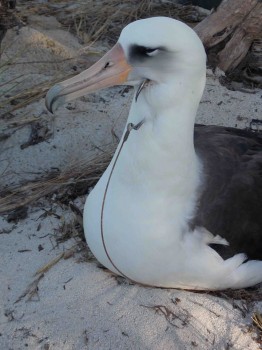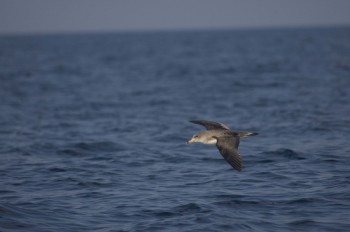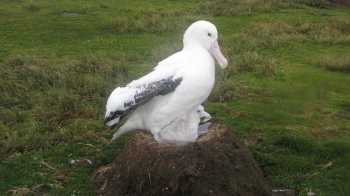George Sangster (Department of Bioinformatics and Genetics, Swedish Museum of Natural History, Stockholm, Sweden) and colleagues write in the ornithological journal Ibis on the taxonomic status of the shy albatross complex. They recognize three species, regarding the Shy Albatross Thalassarche cauta (endemic to Australia) and the White-capped Albatross T. steadi (endemic to New Zealand) as conspecific and separable at the subspecific level.
ACAP currently recognizes these two taxa as full species, as does BirdLife International/IUCN, with both being categorized as Near Threatened.
The 10th Report of the Taxonomic Sub-Committee of the BOU Records Committee writes of the shy albatross taxon as follows:
“A phylogeographical analysis based on mitochondrial DNA sequences indicates that Shy Albatross comprises three major groups: eremita, salvini and cauta/steadi (Abbott & Double 2003a). Of these, eremita and salvini are sister taxa, and cauta/steadi their closest relatives (Nunn & Stanley 1998, Chambers et al. 2009). These three groups differ in plumage and bare-parts coloration. Adult eremita has dark grey plumage on the head and neck and a bright yellow bill, while salvini has noticeably lighter grey head and neck plumage and a grey bill with a contrasting pale yellow upper ridge, and adult cauta/steadi has white head, neck and upper mantle, and a pale grey bill with a pale yellow upper ridge (Marchant & Higgins 1990, Tickell 2000, Brooke 2004).
The taxa cauta and steadi show a single fixed nucleotide difference, minor plumage differences and mean differences in morphometrics but do not form reciprocally monophyletic groups (Abbott & Double 2003a,b, Double et al. 2003). Current evidence provides insufficient support for recognizing cauta and steadi as full species. Based on the combination of morphological and molecular data, recognition of three species is warranted:
Shy Albatross Thalassarche cauta (polytypic, with subspecies cauta, steadi)
Chatham Albatross Thalassarche eremita (monotypic)
Salvin's Albatross Thalassarche salvini (monotypic)
Shy Albatross is on the Western Palaearctic list based on a single record in Egypt and Israel (February–March 1981, Shirihai 1996, see also Cole 2000).”

A White-capped Albatross stands over its chick, photograph by David Thompson
Reference:
Sangster, G., Collinson, J.M., Crochet, P.-A., Kirwan, G.M., Knox, A.G., Parkin, D.T. & Votier, S.C. 2014. Taxonomic recommendations for Western Palaearctic birds: 10th Report. Ibis 157: 193-200.
John Cooper, ACAP Information Officer, 05 January 2015



 English
English  Français
Français  Español
Español 


